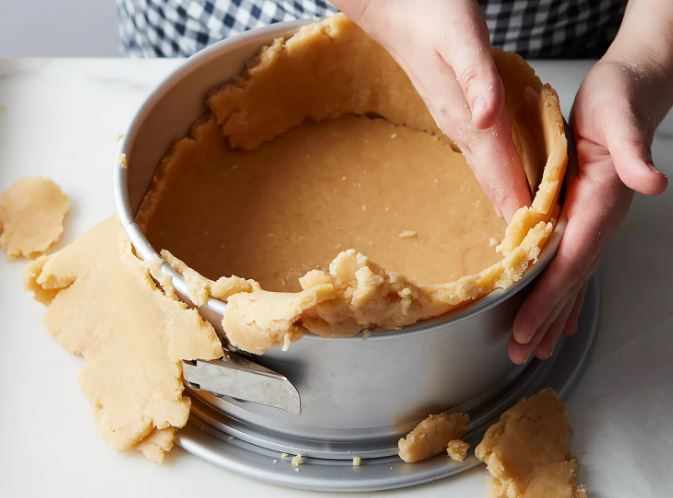Hot Water Paste, a testament to the harmony of simplicity and technique, opens the door to a world of pastry creation. This pastry recipe, with its unassuming yet transformative nature, reveals the magic that can be conjured from a handful of humble ingredients. The story of Hot Water Paste speaks of resourcefulness and innovation, reminding us that even the simplest of ingredients can be crafted into culinary wonders.
The origins of Hot Water Paste can be traced back to a time when baking was an essential skill in households, and creativity thrived in the heart of the kitchen. As bakers sought ways to streamline the pastry-making process, the concept of using hot water to bind and create dough emerged.
Hot Water Paste emerged as a response to the need for a versatile pastry that could be prepared quickly and efficiently. The marriage of flour, Crisco, salt, baking powder, and boiling water introduced a new dimension to pastry-making, where the science of heat played a vital role.
The preparation of Hot Water Paste was a delicate dance, where ingredients were carefully sifted and combined. The Crisco, instead of being rubbed in as in traditional pastry-making, was lightly incorporated into the dry mixture. The introduction of boiling water set the wheels in motion, as the heat activated the baking powder and Crisco, resulting in a dough that was both pliable and easy to work with.
The cooling process was crucial, as it transformed the sticky dough into a manageable consistency, ready to be shaped and molded. This unique technique allowed bakers to create pie crusts that were both tender and flaky, embodying the essence of comfort and tradition.
INGREDIENTS
- 1 cupful flour
- 4 tablespoonfuls Crisco
- 1/3 teaspoonful salt
- 1/4 teaspoonful baking powder
- 3 tablespoonfuls boiling water
INSTRUCTIONS
- Sift the flour, salt, and baking powder into a mixing basin, ensuring thorough mixing of the dry ingredients.
- Lightly rub the Crisco into the sifted mixture, ensuring a delicate and even distribution of the fat.
- Stir in the boiling water gradually, allowing the heat to activate the baking powder and Crisco, creating a pliable dough.
- Once the dough has come together, allow it to cool before handling. Cooling is essential to prevent the dough from becoming too sticky to work with.
- After the dough has cooled, it is ready to be shaped and molded into the desired form for your pie crust.
- The Hot Water Paste can be used to create pie crusts for both sweet and savory fillings, showcasing its versatility.
In summary, Hot Water Paste is a tribute to the ingenuity of bakers who sought efficient yet effective methods of pastry-making. Its history and preparation reflect a fusion of science and tradition, where the manipulation of heat and ingredients led to the creation of a pastry that marries ease of preparation with a delightful culinary experience. With each use, Hot Water Paste invites us to embrace simplicity and celebrate the beauty that can emerge from a handful of essential ingredients.





